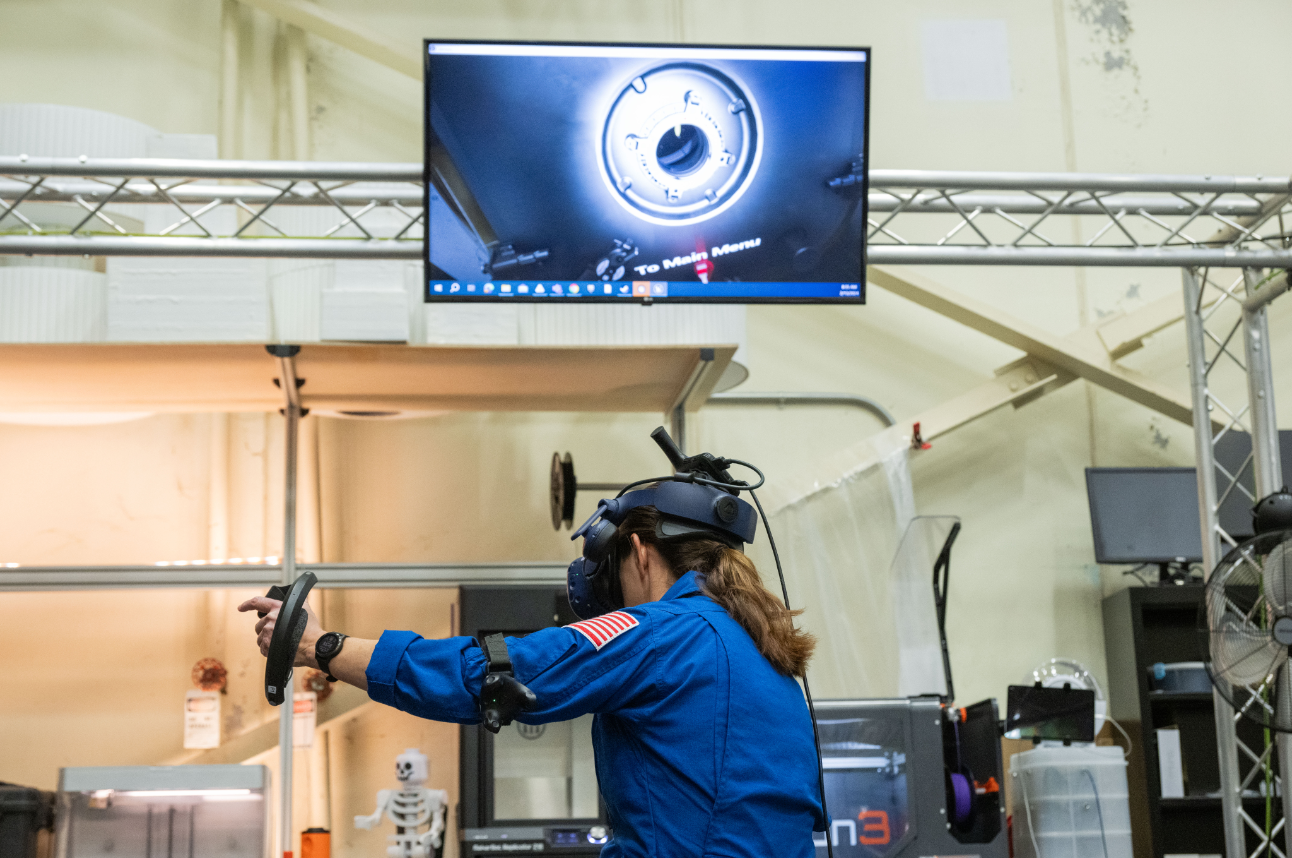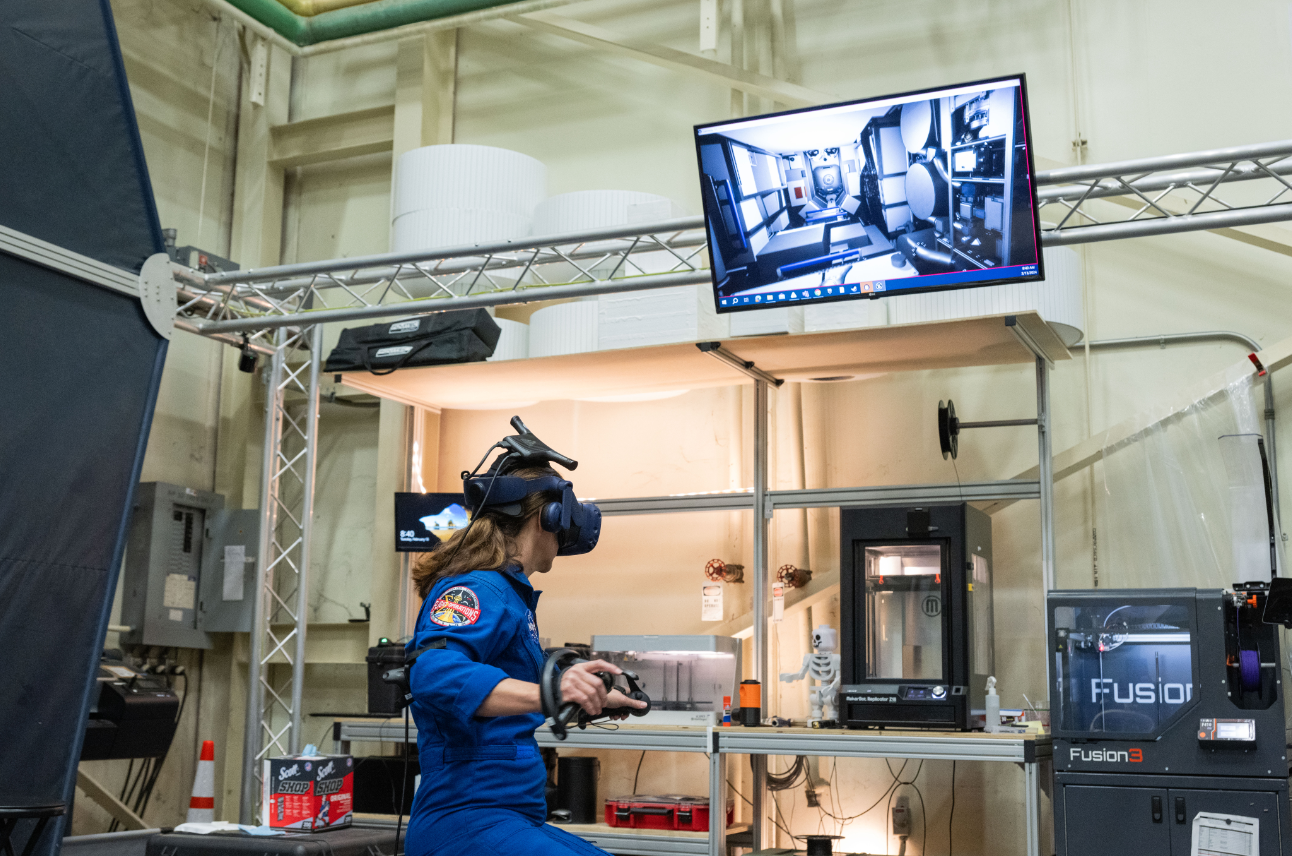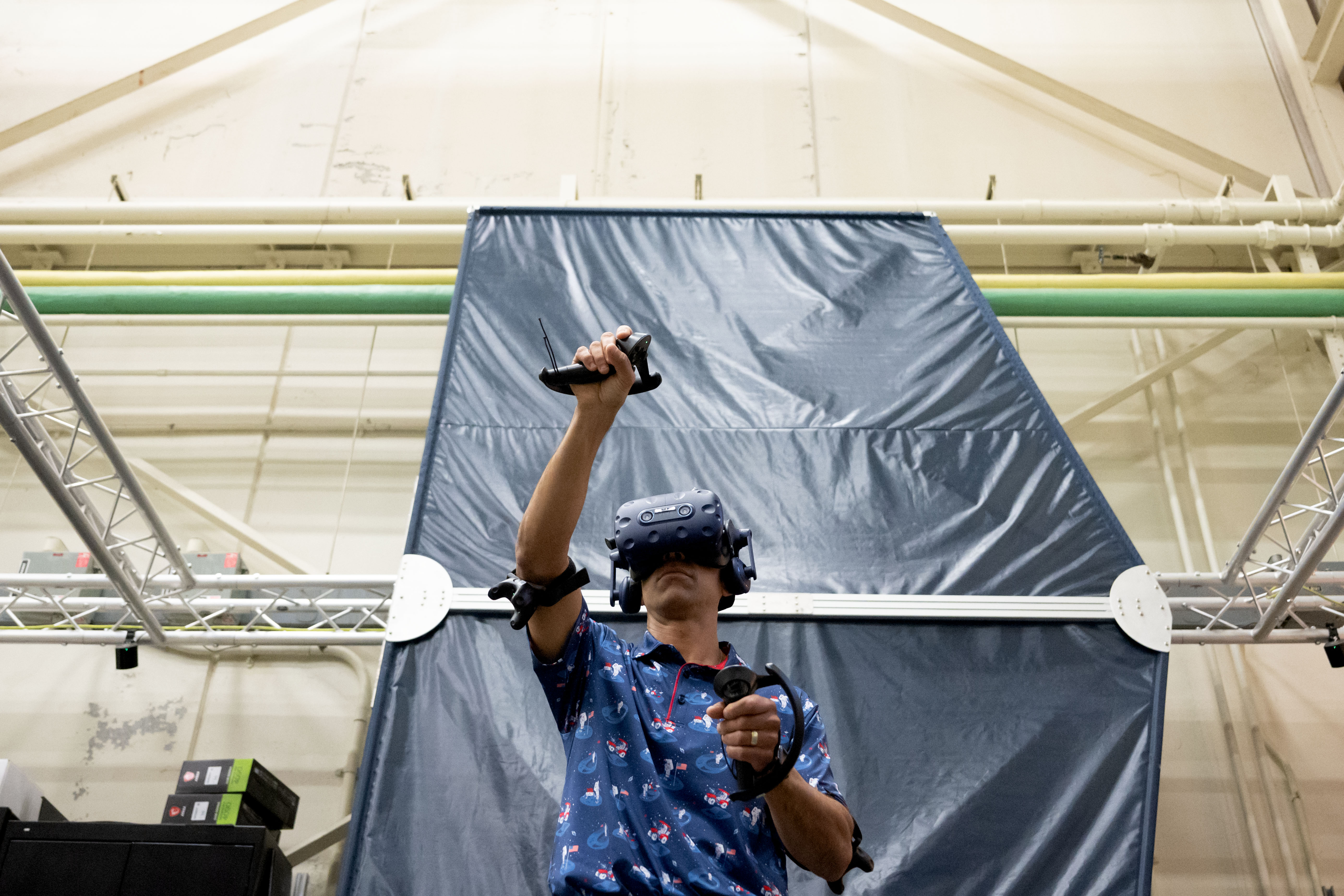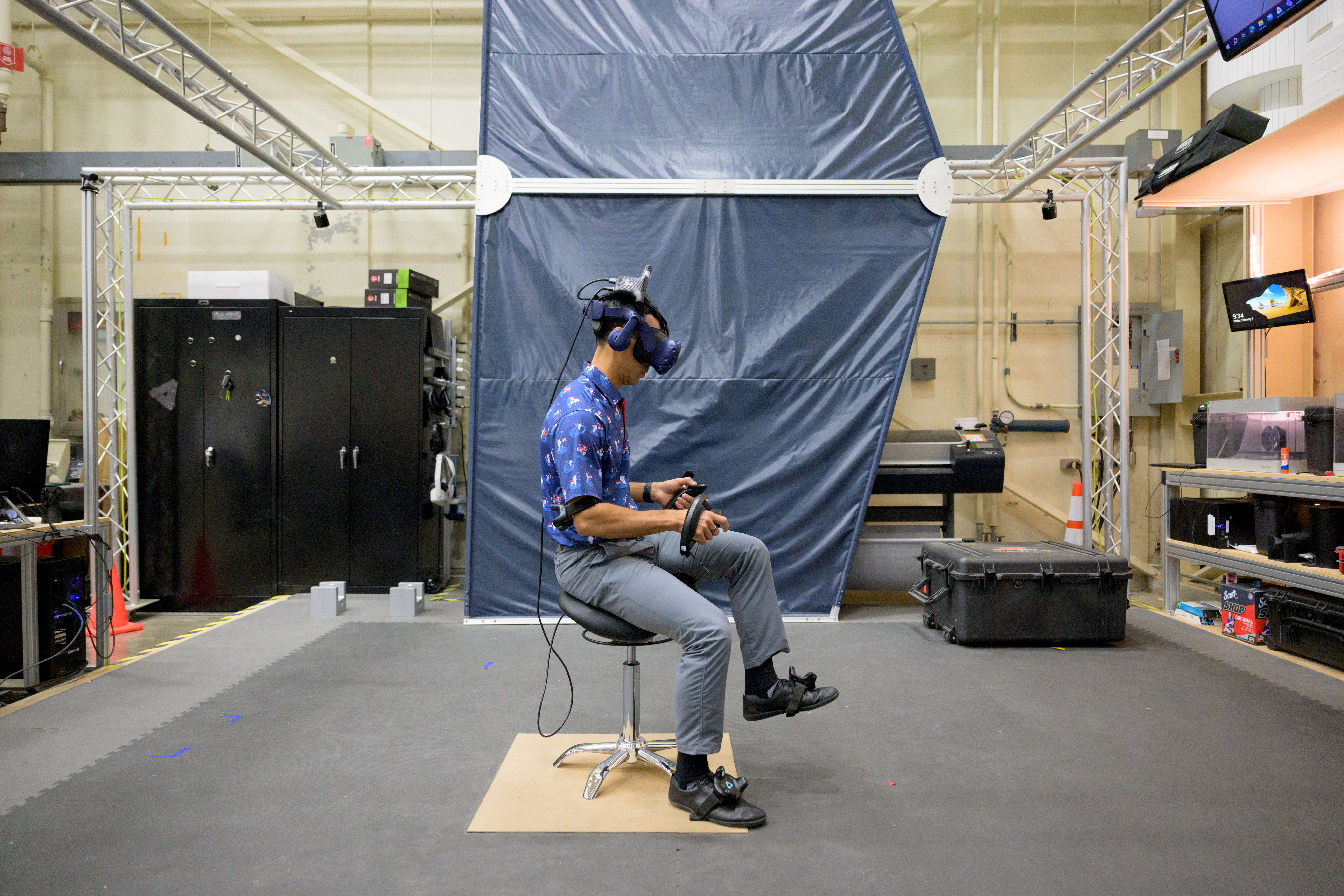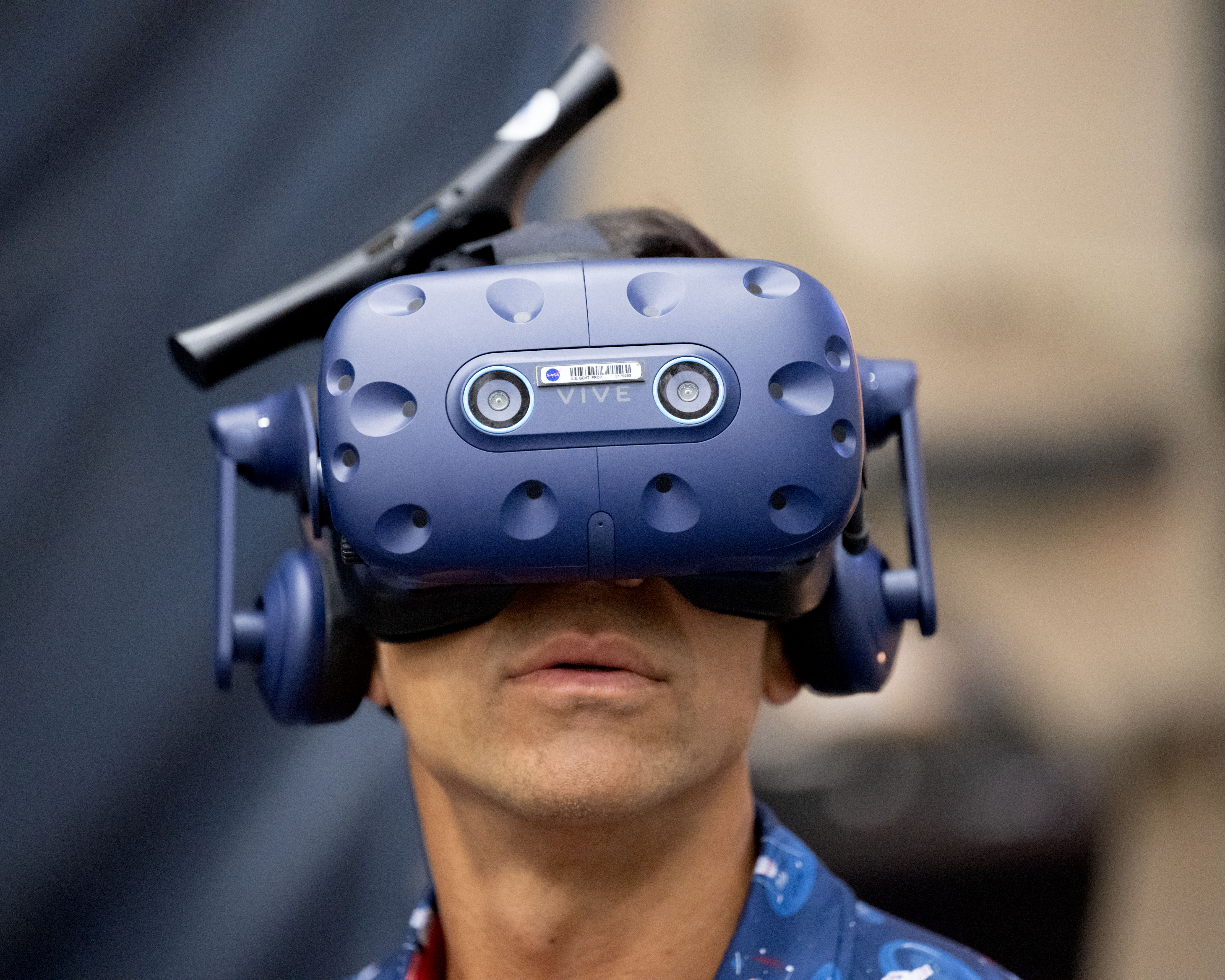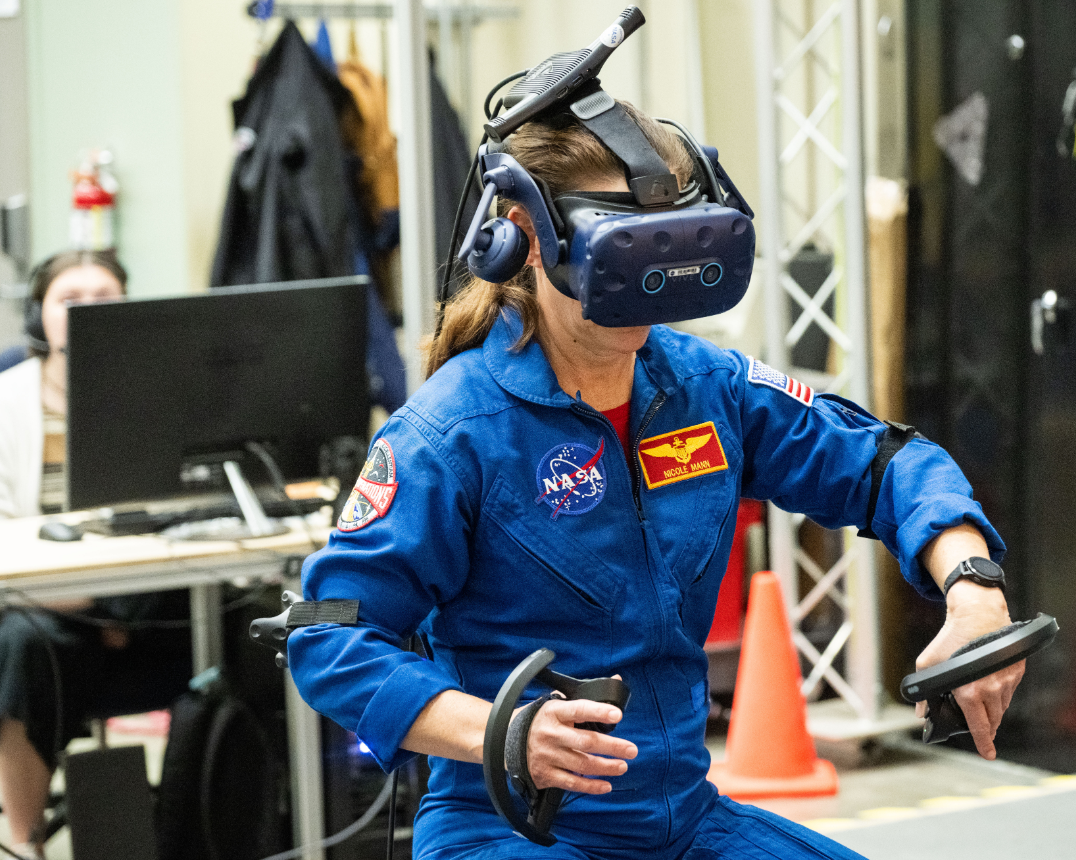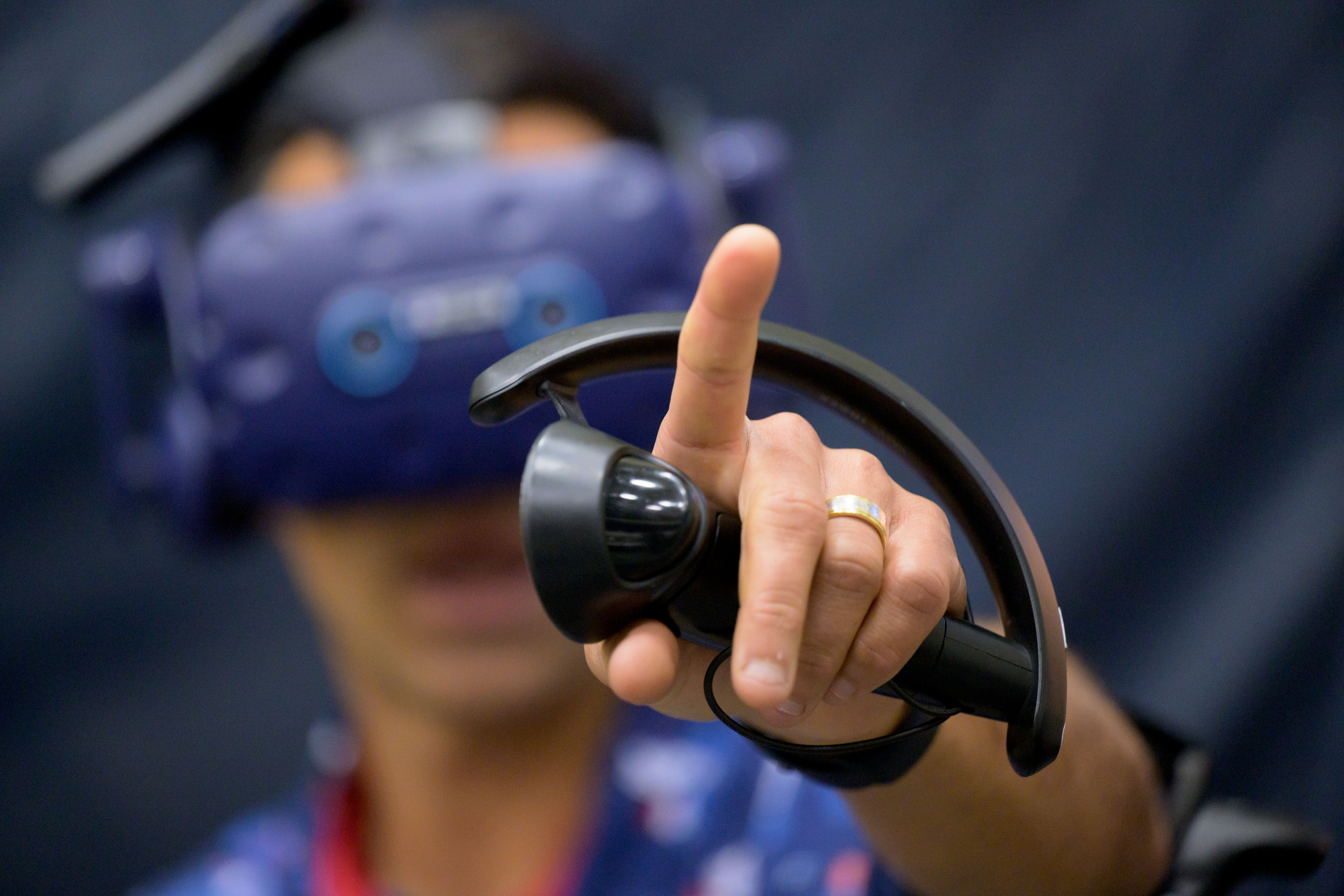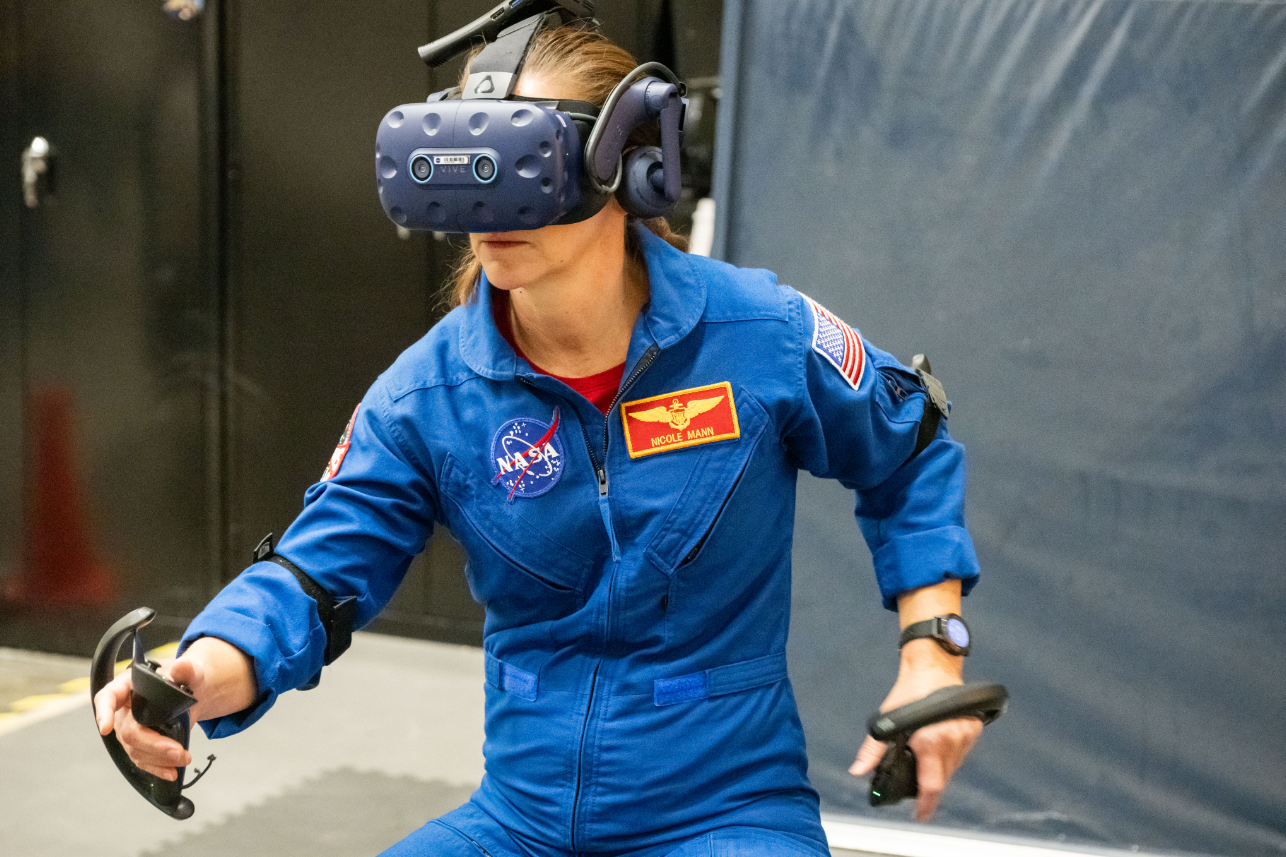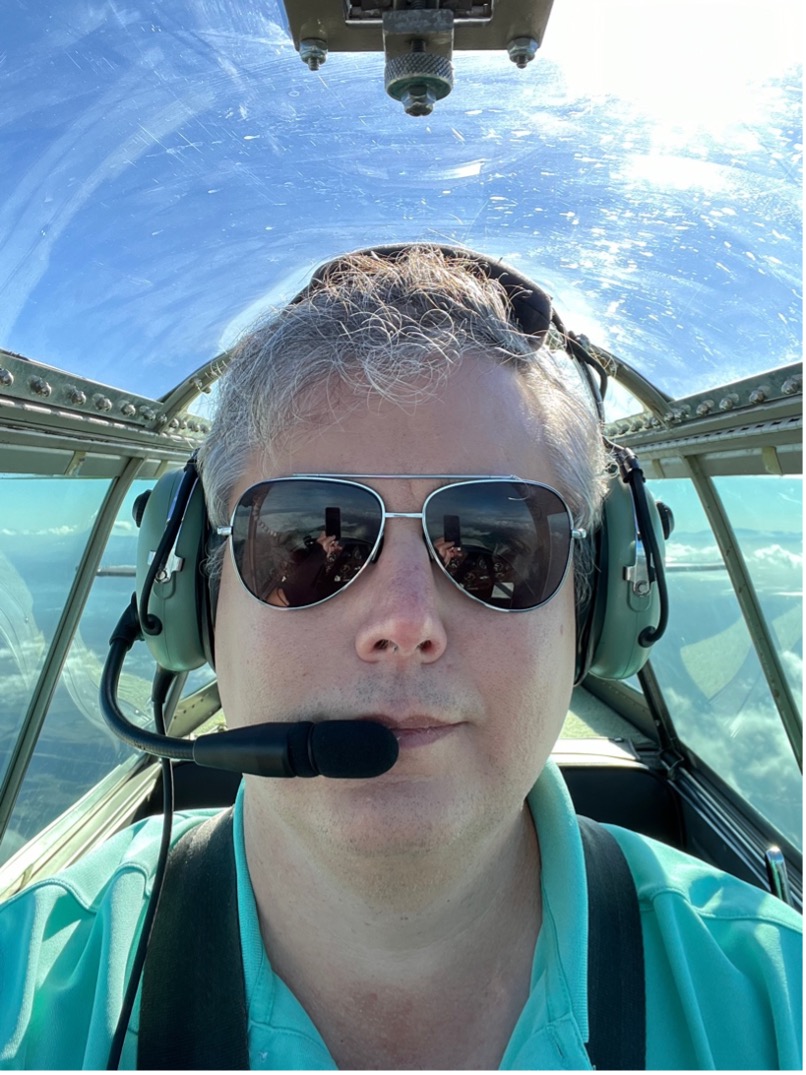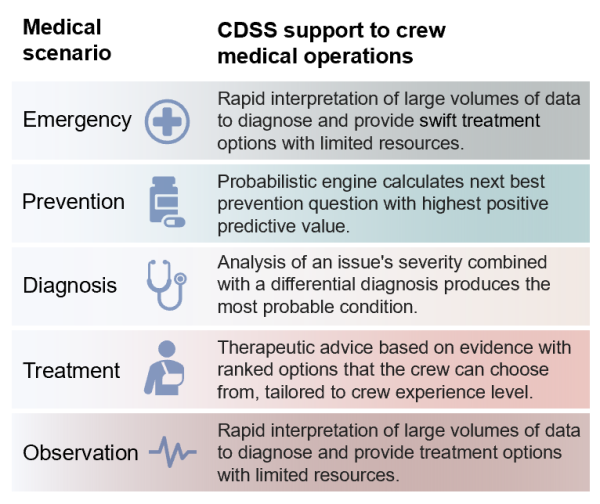Through Astronaut Eyes, Virtual Reality Propels Gateway Forward
NASA astronauts are using virtual reality to explore Gateway. When they slip on their headsets, they're not just seeing the station—they're in it, meticulously surveying every detail and offering crucial insights on design and functionality.
2 min read
Preparations for Next Moonwalk Simulations Underway (and Underwater)
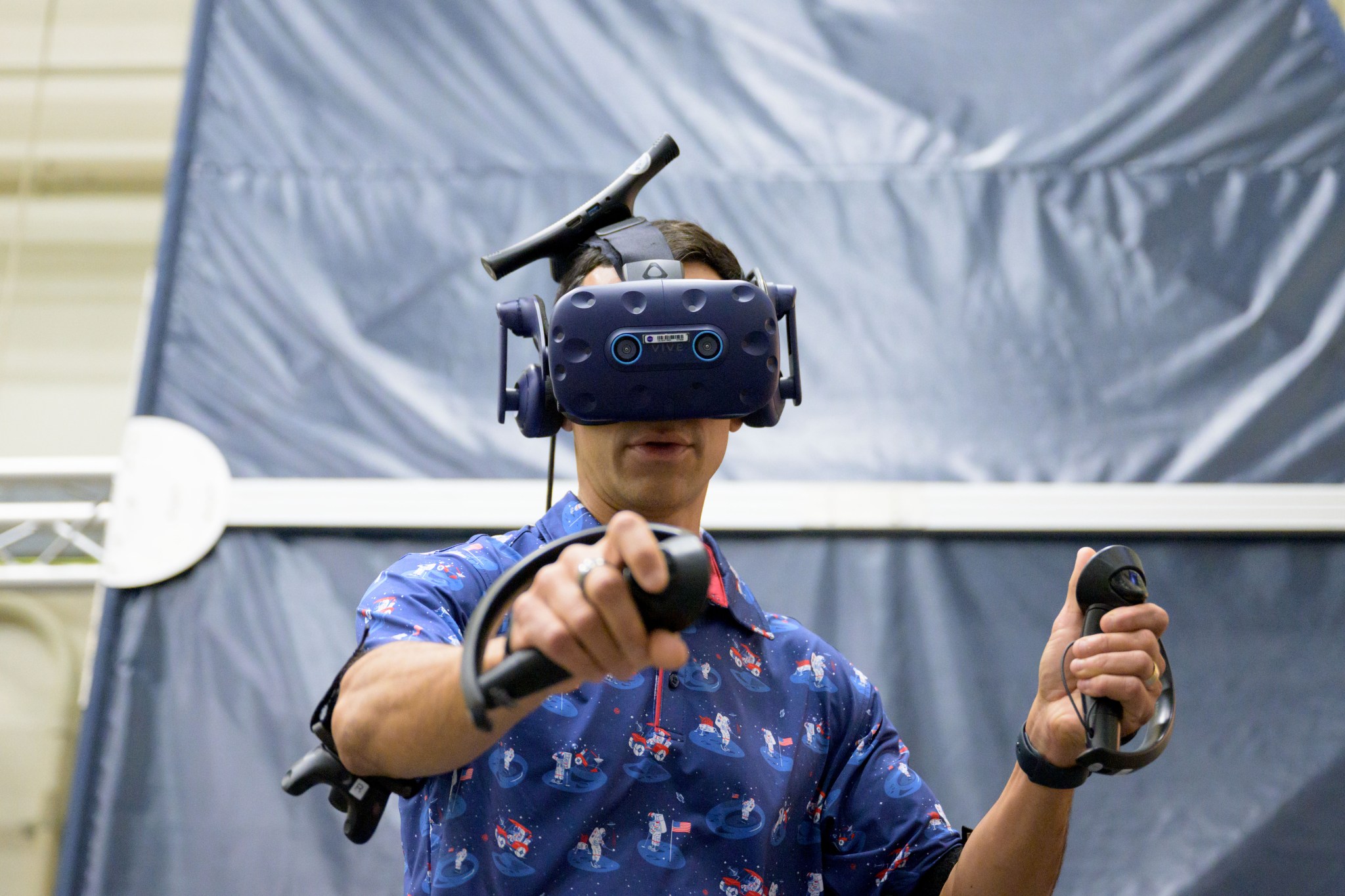
Astronauts living aboard the Gateway lunar space station will be the first humans to make their home in deep space. To fine-tune the design of the next-generation science lab, solar-powered spaceship, and home-away-from home for international teams of astronauts, NASA calls on the likes of Raja Chari and Nicole Mann, experienced astronauts who know a thing or two about living and working on a space station.
Commanders of the SpaceX Crew-3 and Crew-5 missions to the International Space Station, respectively, Chari and Mann recently brought their long-duration mission experience to bear when they strapped into virtual reality (VR) headsets to tour Gateway, humanity’s first space station to orbit the Moon.
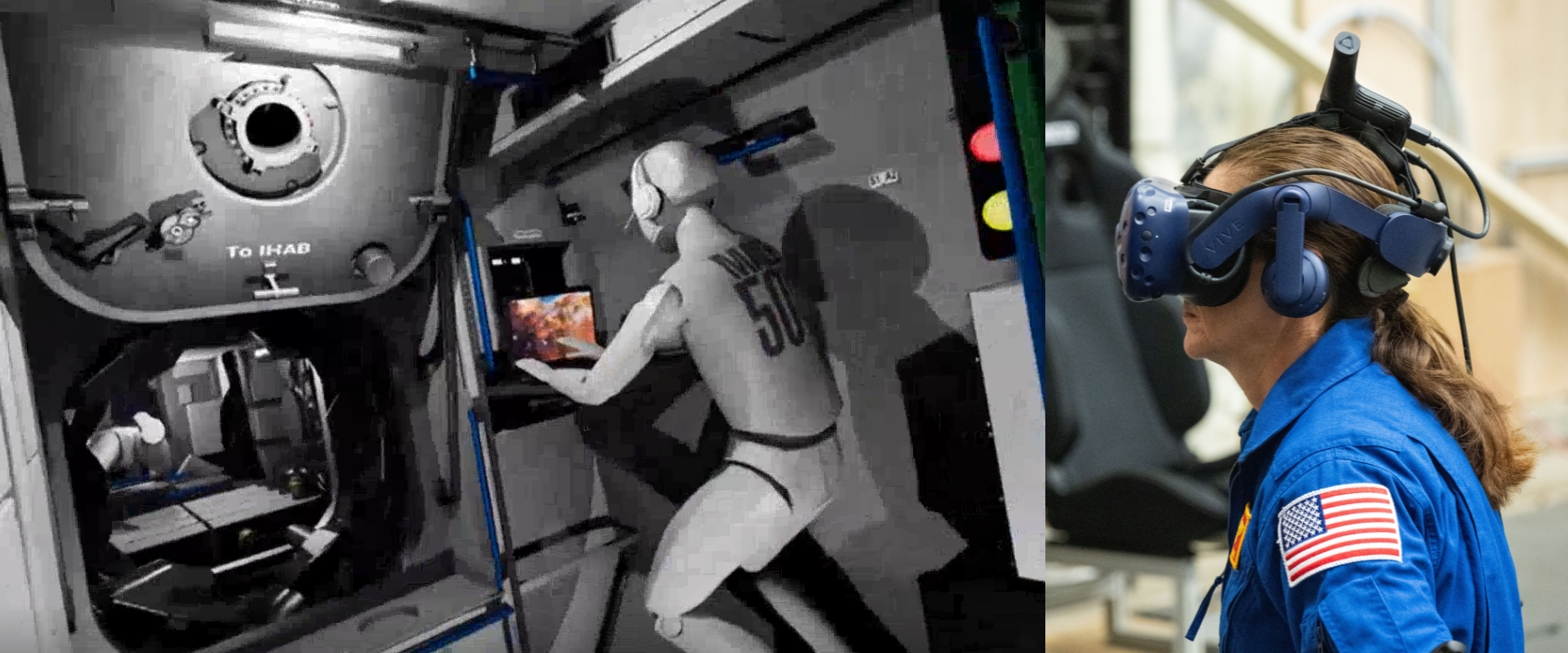
During VR testing, astronauts engage in a variety of tasks that they expect to encounter in their day-to-day life on Gateway during real Artemis missions, including performing science experiments, retrieving supplies, and preparing warm meals. By combining VR models with real-world astronaut experience, NASA designers can make tweaks to Gateway’s interior design for a safer and comfier space station.
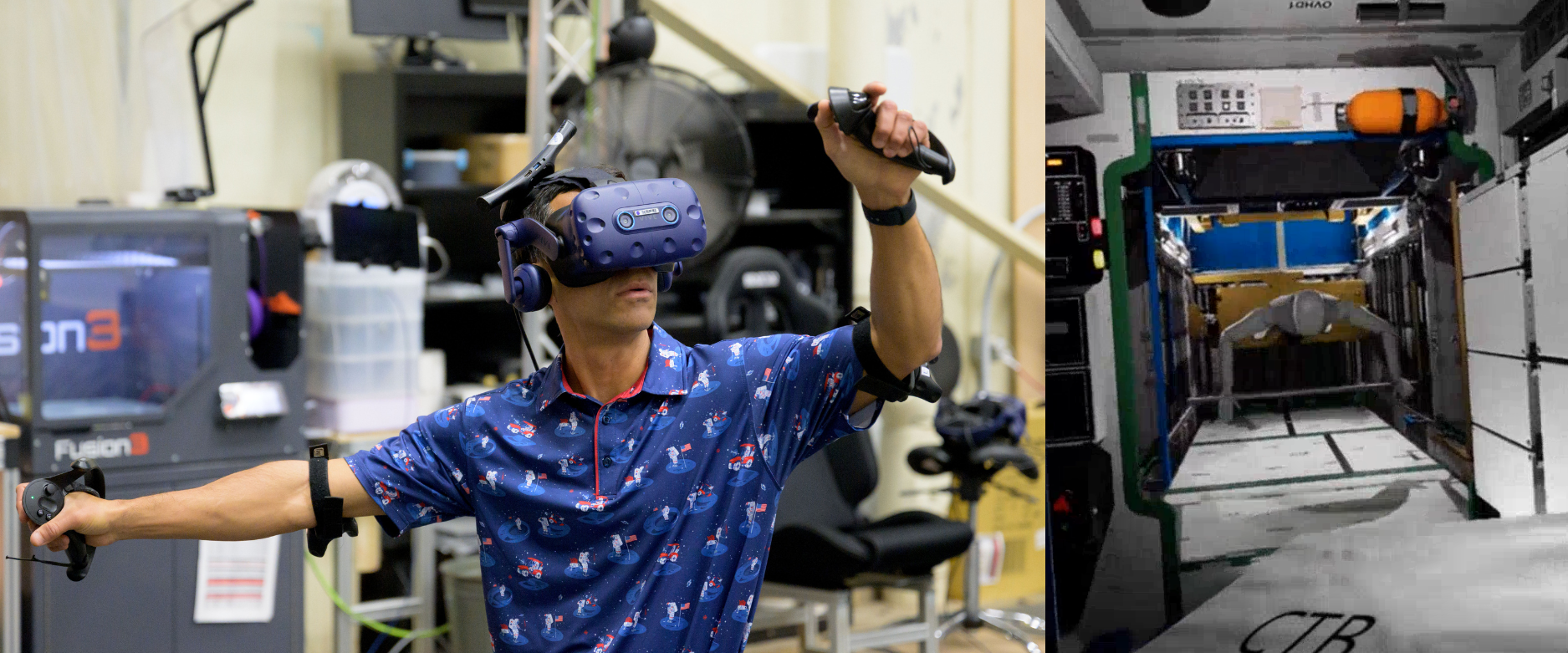
Gateway is poised to revolutionize deep space exploration at the Moon and beyond as a testbed for next-generation technology and new science to better understand the impact of space on humans. This space station is a critical component of the Artemis campaign to return humans to the lunar surface for scientific discovery and pave the way for the first human missions to Mars.
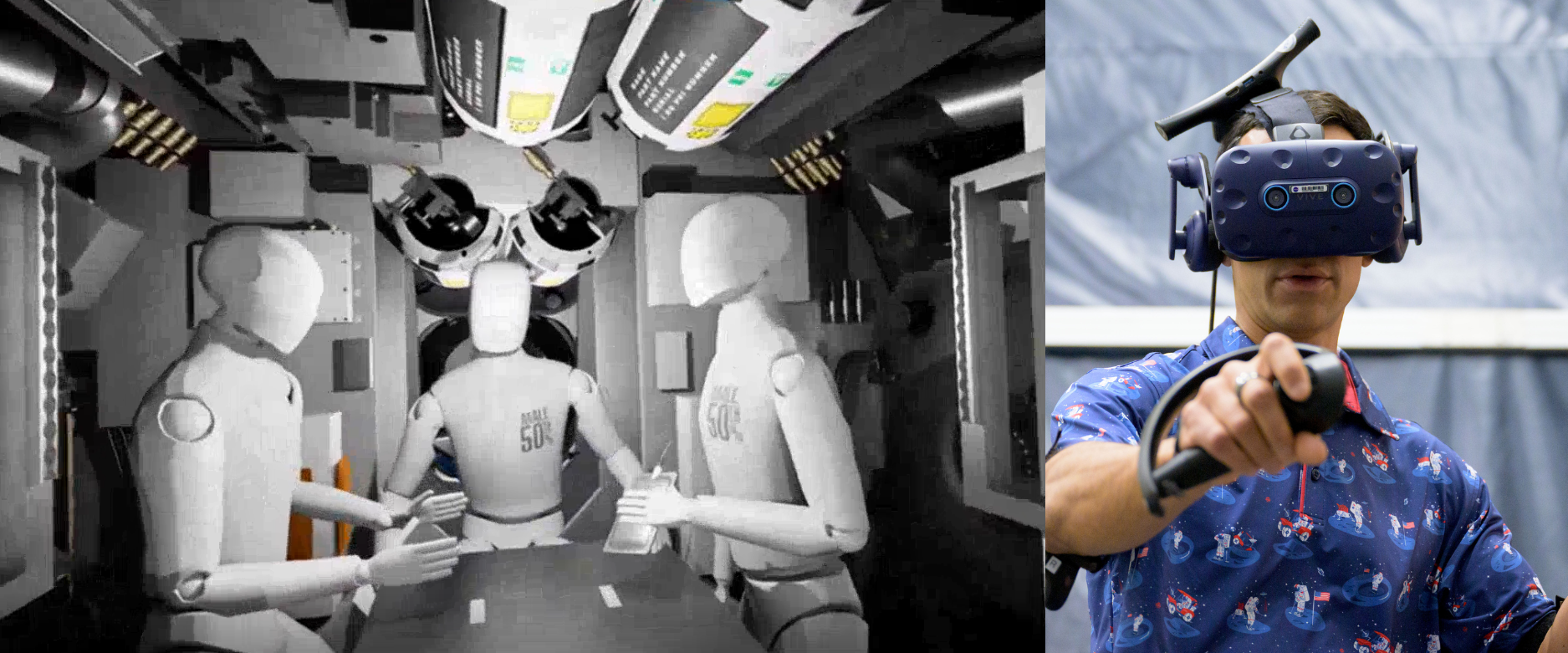
Image credits: NASA/Bill Stafford/Josh Valcarcel
What's Your Reaction?































